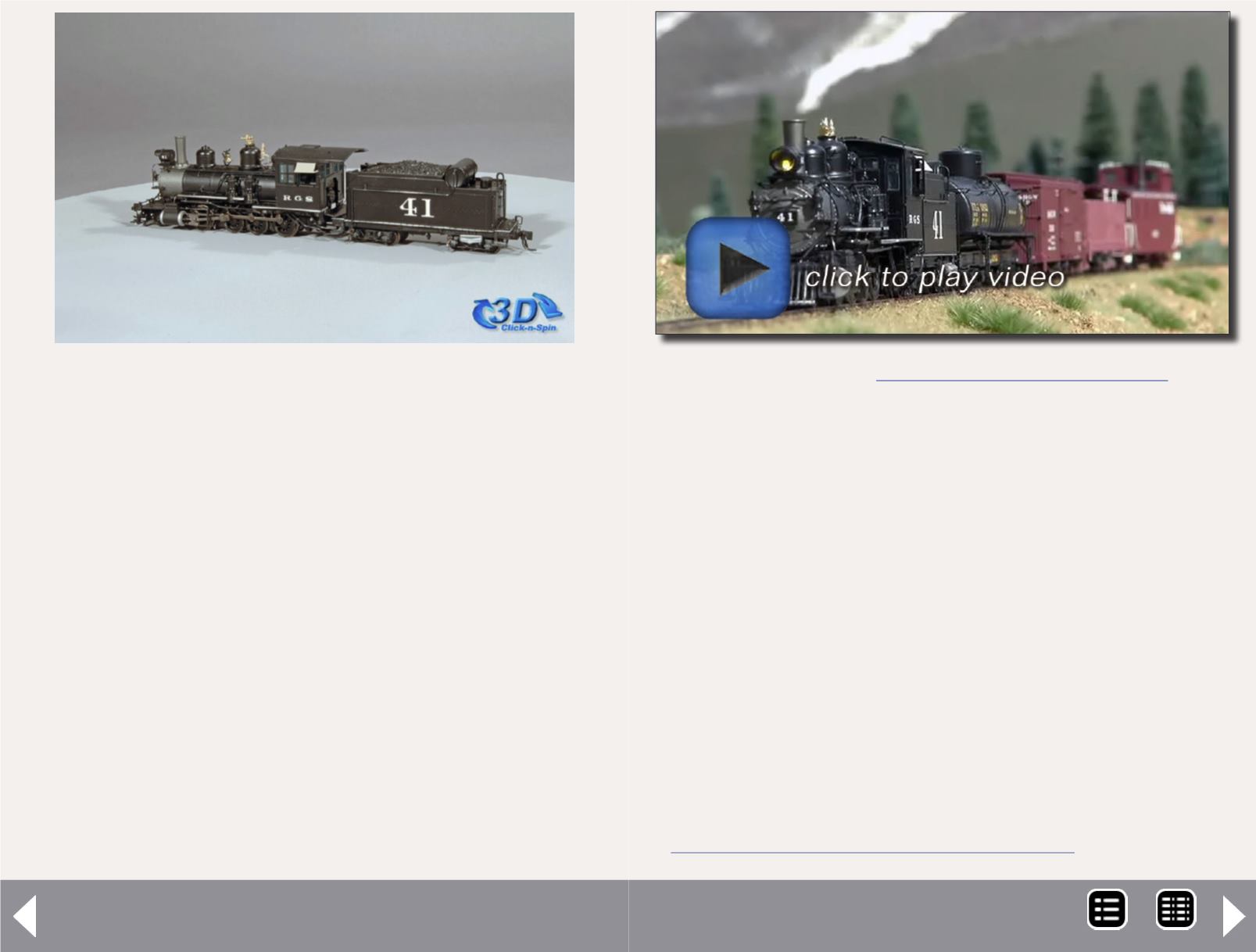
PROTOTYPE HISTORY
Baldwin Locomotive Works built twelve 2-8-0 locos for the Rio
Grande narrow gauge lines in 1881 and numbered them 400-411.
With cylinders at 16”x 22” and drivers of 37” diameter, these locos
became the largest consolidations in service on the Denver and Rio
Grande, intended for helper service on the 4 percent grades over
Marshall Pass, Cerro Summit, and Cumbres Pass.
As larger versions of the Class 60 consolidations, these new class
70 locos weighed in at approximately 70,000 lbs. Five of these
locos got converted to standard gauge in 1889 and given a class 74
designation.
In 1900 these five were all switched back to narrow gauge and put
back into the original 400-411 series, but not given their original
numbers. They retained the class 74 designation, however.
In 1916, the Rio Grande Southern acquired the 409 and the “sec-
ond” 402 (originally 411), re-numbering them to RGS 40 and 41.
In 1921, the D&RG re-organized to become the Denver and Rio
Grande Western. In 1924, the ten remaining Class 70 (and 74)
engines from the 1881 group became D&RGWnumbers 340-349
and were given the new power designation of C-19.
In early 1936, the D&RGW leased three C-19s – 343, 345, and 346
– to the Colorado and Southern. When the C&S narrow gauge end-
ed in April 1937, all three locos were returned to the D&RGW.
Today, four locos survive:
D&RGW 346, ex-D&RG 406 resides at the Colorado Railroad
Museum.
D&RGW 340/RGS 40 runs at Knott’s Berry Farm in California
as D&RGW 340.
D&RG 409/RGS 41 runs at Knott’s Berry Farm (California) as
RGS 41.
D&RG 420 / RGS 42 is cosmetically preserved in the muse-
um inside the roundhouse at Durango.
For more historical details, see the Blackstone Models website:
MRH Product Showcase - 2
MRH-Sep 2013


